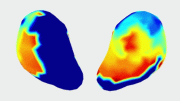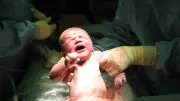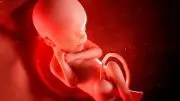
A recent study found that contrary to previous beliefs, almost all births in England between 2005 and 2014 outside of working hours did not have a significantly higher risk of neonatal death from anoxia or trauma. Only 2% of births – those by emergency cesarean without labor – showed a 1.5 times higher risk outside working hours, translating to 46 deaths over ten years, suggesting focus should shift to this subset of births.
A recent study provides a comprehensive examination of the factors influencing the timing of births, indicating that for the vast majority of deliveries, being born outside of regular working hours is just as safe as being born within them.
A recent study indicates that from 2005 to 2014, in nearly all births in England, the risk of infant death due to anoxia (oxygen deprivation) or trauma was not significantly higher for those born outside of regular working hours compared to those born during working hours.
This challenges the assumed, wider notion of a ‘weekend effect,’ with previously reported research suggesting an increased death risk for babies born outside of working hours or on weekends.
The current study from City, University of London linked together a large body of data from health services and official statistics, relating to over six million births during a ten-year period.
This allowed the researchers to analyze births in great detail, including stratifying them by how the labor started (‘spontaneous’ onset, induced onset, no labor), by the type of birth (‘spontaneous’, cesarean, or assisted with forceps or ventouse), by the time of day, and by day of birth, as well as taking account of obstetric risk factors.
Importantly, the study excluded stillbirths (deaths before birth) from the analysis. Over 90 percent of stillbirths are known to occur prior to the onset of labor and are therefore unlikely to be affected by care at birth. In the majority of the remaining cases, it is unknown whether the stillbirth occurred before or during birth.
Stillbirths had been included in a previously published study of 1.3 million births in England, which looked at the day of the week of the birth, but not the time of day, and which concluded that the rate of stillbirth, death during pregnancy, or death in the first week after live birth was higher at the weekends.
A previous study in Scotland of over a million births excluded stillbirths and included the time of day of birth in its analysis of deaths in the first month after live birth. It concluded that rates of death were higher outside of working hours during the week, compared to working hours.
However, neither of these studies was large enough to provide the sufficient detail needed to identify the small subgroup of births with a higher risk of death to the baby found in the current study of births in England.
The current study found that for two percent of births in England – births by emergency cesarean without labor – being born outside of working hours brought a 1.5-fold higher risk of death to the baby from anoxia (lack of oxygen) or trauma, compared to births during working hours. As the death of a newborn is a rare event, this higher relative risk nonetheless translates to a low absolute risk (an estimated 46 deaths of newborn babies over the ten-year study period).
The study recommends that based on this evidence, attempts to reduce risk should focus on this smaller subset of emergency births, rather than regarding all births out of hours as dangerous. It recommends further research should focus on understanding who goes on to have an emergency cesarean birth without labor, and what aspects of care in the community or in the hospital can help prevent critical incidents from arising. Such aspects of care could include monitoring before birth or advice on healthcare-seeking behavior for particularly vulnerable mothers or babies.
The authors acknowledge that their study has not investigated birth data for the years 2015 to the present. However, these data have not yet been linked and made available, meaning that analysis of the period, which will have included the effects of the worsening maternity services staffing crisis and the COVID-19 pandemic, was beyond the scope of the current study. They continue to seek funding to acquire and analyze these data in a future study.
Alison Macfarlane, Principal Investigator of the study and Professor of Perinatal Health at the Department of Midwifery and Radiography, City, University of London, said: “These findings are very reassuring and demonstrate the benefits of using a very large, linked dataset. They show that attention should shift from the timing of birth to identifying this very small subgroup of highly vulnerable women and the measures required to meet their needs.”
Reference: “Neonatal mortality in NHS maternity units by timing and mode of birth: a retrospective linked cohort study” by Lucy Carty, Christopher Grollman1, Rachel Plachcinski, Mario Cortina-Borja and Alison Macfarlane, 13 June 2023, BMJ Open.
DOI: 10.1136/bmjopen-2022-067630
The study was funded by ECHR.








Be the first to comment on "Debunking the “Weekend Effect” – New Insights on Birth Timings and Baby Mortality"